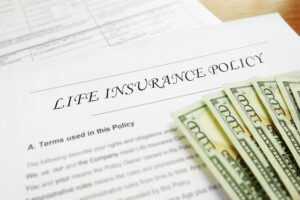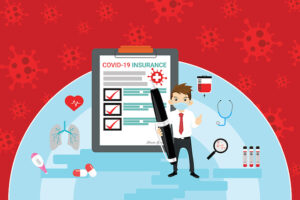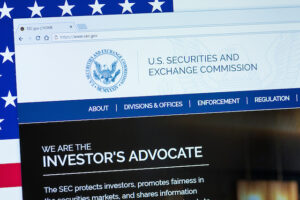If the idea of a press release is to generate publicity, well done, Ladder Life.
The online life insurer got plenty of attention for findings in a recent poll it conducted about how wasteful spending could instead be directed toward life insurance.
The poll went (semi) viral after USA Today tweeted about it on May 7, saying the average American adult spends $1,497 a month on “nonessential items,” which equates to almost $18,000 per year.
That was a republished account of the survey from the Motley Fool website, which posted an article, “6 Reasons Americans Don’t Have Life Insurance, and Why They’re All Bogus,” on May 5, including findings from the Ladder survey.
So while many consumers have responded to the USA Today tweet to the effect that they’ll keep dropping that $20 a month (on average) at Starbucks thank you very much, kudos to Ladder Life for at least bringing the issue to light – something life insurers traditionally struggle to do even during Life Insurance Awareness Month each September (maybe Brooke Shields will make a difference this year?).
Here’s the text of the press release from Ladder Life, which was originally done to tie into May 2 being National Life Insurance Day:
Americans spend at least $18,000 a year on these non-essential costs
Between eating out, paying for cable and streaming services, receiving subscription boxes and other superfluous spending, the average American spends $1,497 per month on non-essential items, according to new research.
That can add up to almost $18,000 a year – or more than a million dollars over the course of an adult lifetime.
It can be good to treat yourself to something that brings you happiness, but a survey of 2,000 Americans found the average respondent does a bit more than that.
Per month, results revealed that the average American spends $20 on coffee drinks, as well as $209 on dinners at restaurants and $189 going out drinking with friends.
Many haven’t cut the cord, and are paying an average of $91 per month for cable, in addition to $23 for streaming movies and TV shows. Spending on music streaming services averaged $22 a month, while other apps added $23.
While going to the gym is good for your health, the average American spends $73 on a membership and exercise classes.
The survey revealed that Americans make an average of five impulse purchases a month – for a total of $109 – but the majority (58%) also feel there are other important things they can’t afford.
Commissioned by Ladder and conducted by OnePoll in advance of National Life Insurance Day (May 2), the survey looked at Americans’ spending on “essential” versus “non-essential” items, and found that Americans may be able to afford essentials more easily than they think, just by tweaking their spending habits.
In addition to looking at their spends, the survey also examined how respondents feel about their financial decisions.
Seventy percent believe they could make smarter decisions with their money on a monthly basis, and 24% admit they don’t have a budget.
Fifty-eight percent believe there are important things they are unable to afford – putting money into a retirement account (38%) and life insurance (35%) were at the top of the list. For those who don’t have life insurance, the top reason for not having it was they thought it was too expensive (52%).
“People tend to overestimate the cost of life insurance,” said Ladder Co-founder Laura Hale. “Trading off a couple of smaller short-term purchases per month can support a monthly policy payment. It can give you the longer term satisfaction that comes from making sure your family is protected.”
The survey found that only 10% of respondents know that they could get life insurance in place in less than 15 minutes online.
And of those who have life insurance, 29% feel they don’t have enough coverage.
“Term life insurance is easy to apply for now, thanks to technology,” said Hale. “You can get instant decisions on fully-underwritten policies at competitive rates. People want to do the right thing for their families. Now, it can happen in minutes.”
The vast majority of respondents – 79% – like to feel secure in their financial decisions, showing the importance of balancing spends between long-term financial security and immediate wants.
Check out the infographic below, and for lists of things Americans feel they can’t afford, why people with life insurance say they don’t have it, and an itemized breakdown of Americans’ non-essential monthly spends can be found along with the press release here.
- SEE ALSO: Los Angeles Times: A life insurer says you should stop eating out (and buy life insurance instead)















And, just who makes the decision as what is"non essential"?:skeptical:
Unfortunately it is not quite as simple as the surveyors want to make it.
If one wants to develop social networks, one has to do what the others do in order to be with them.
It starts with church with things like the church coffee bar, eating out afterwards and (sometimes) pretty pricey youth group activities.
Then it goes on to eating out with co-workers. Bringing your own sandwich to work is pretty much a guaranteed way to be "out of the loop".
And then goes on from there.
YESS …AND THEY DON'T EAT BACON
Starbucks is essential while you are studying for insurance license exams. It becomes non-essential after you pass them.
Not for me… I don't patronize Starbucks.. But, I do drink plenty of coffee… To me Beer is a non essential but I didn't see it on their list.. Last night at Red Lobster and that certainly was essential to satisfying my lobster craving… :yes:
This study and the response to it on USA Today are a great example why most people fail miserably trying to sell insurance on social media. Shaming people into buying life insurance doesn't work. Plain and simple, in fact you will push most people further into their bad habits.
I was taught originally to "find" the money for the premium by uncovering something they were spending money on that they didn't really need.. Occasionally it worked but those sales were usually a lapse waiting to happen. Then I tried comparing the cost with one of their "vices" such s it only cost 2 packs of cigarettes per week.. That worked a little better.. Some times I would even tell them, if you can spend enough for 7 packs per week to put yourself in an early grave, surely you can afford two more packs to take care of your family,,,I could get away with it because I was also a smoker..Tried many differnt ways t get prospects off dead center. Some worked better than others… Unfortunately none worked all the time..
Even a broken clock is right twice a day.
People buy life insurance because it solves a pain, not because they were guilt tripped into it.
The other big thing on social media is for companies to run ads about how fast you can get life insurance. If speed was the problem, SelectQuote, AIG Direct, etc. solved it years ago. Life insurance sales and ownership should be trending up, and not down.
Until people truly grasp the financial difficulties their family will face at their passing, life insurance will always play second fiddle to anything else.